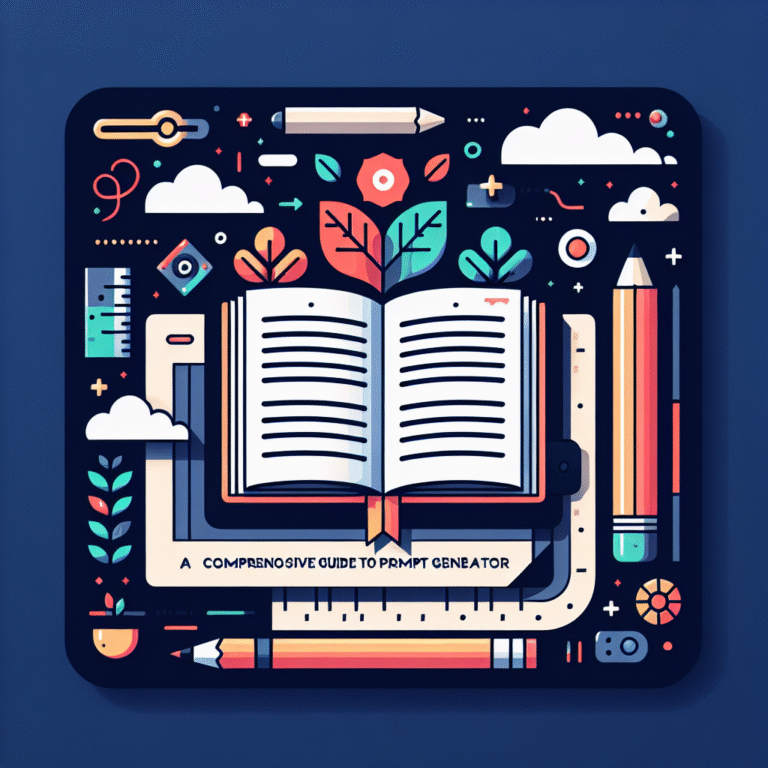Examples of Good Prompts for ChatGPT
p>Examples of good prompts for ChatGPT are crucial for effective communication and extracting valuable information from this powerful language model. ChatGPT, with its advanced capabilities, can understand and respond to a wide range of questions and prompts, from simple queries to complex, open-ended discussions. However, the quality of the response largely depends on the quality of the prompt. A well-crafted prompt can lead to detailed, accurate, and relevant responses, while a poorly constructed one might result in confusion or irrelevant answers. Therefore, understanding how to create good prompts is essential for anyone looking to leverage ChatGPT for learning, research, content creation, or simply for exploring the vast possibilities of conversational AI. This involves not just asking questions but framing them in a way that the model can understand and respond effectively. Good prompts can range from straightforward factual inquiries to more creative and open-ended requests, such as story generation, dialogue creation, or even assistance with writing tasks. The key to a good prompt is clarity, specificity, and relevance to the task at hand. Moreover, the ability to provide context and specify the desired format or tone of the response can significantly enhance the usefulness of the output. For instance, asking ChatGPT to explain a complex scientific concept in simple terms, or to generate a short story based on specific characters and settings, requires a clear and detailed prompt that guides the model towards producing a relevant and useful response. In essence, the art of crafting good prompts for ChatGPT is about balancing specificity with openness, allowing the model the freedom to generate creative and informative responses while ensuring they align with the user’s needs and expectations.<<
Understanding ChatGPT Capabilities
 <<
<<
Before diving into the examples of good prompts, it’s essential to understand the capabilities and limitations of ChatGPT. This model is designed to process and generate human-like text based on the input it receives. It can answer questions, provide information, create content, translate text, summarize long documents, and even engage in natural-sounding conversations. However, its ability to perform these tasks effectively depends on the quality and clarity of the prompt. Understanding what ChatGPT can do helps in crafting prompts that are within its capabilities, thereby increasing the likelihood of receiving useful and accurate responses. For example, knowing that ChatGPT can generate creative writing, one can craft a prompt that asks for a short story with specific themes, characters, and settings, allowing the model to exercise its creative capabilities while staying within the bounds of the user’s request.<<
Exploring Creative Writing
<<
One of the fascinating applications of ChatGPT is in creative writing. By providing a prompt that outlines the parameters of a story, such as genre, characters, plot elements, and tone, users can tap into the model’s ability to generate engaging narratives. For instance, a prompt like ‘Write a science fiction story set on a distant planet where humanity has established its first colony, focusing on the themes of resilience and cooperation,’ can lead to a detailed and immersive story. This not only showcases the model’s creative potential but also demonstrates how a well-crafted prompt can guide the generation of high-quality content. Furthermore, the ability to iterate on prompts, refining them based on the initial response, allows for a collaborative process between the user and ChatGPT, leading to tailored and satisfying creative outputs.<<
Practical Applications and Examples
<<
Beyond creative pursuits, good prompts for ChatGPT have numerous practical applications. In education, for example, prompts can be designed to help students understand complex concepts by asking the model to explain them in simpler terms or through analogies. A prompt such as ‘Explain the concept of quantum entanglement in a way that a high school student could understand’ can yield a response that is both informative and accessible. Similarly, in content creation, prompts can be used to generate ideas, outlines, or even draft articles on specific topics, leveraging ChatGPT’s ability to research and compile information into coherent and engaging texts. For businesses, prompts can facilitate the generation of marketing materials, such as product descriptions or social media posts, by asking the model to craft compelling copy based on the product’s features and target audience. These examples highlight the versatility of well-crafted prompts in achieving a wide range of goals, from educational enrichment to professional content creation.<<
Step-by-Step Guide to Crafting Prompts
 <<
<<
Crafting effective prompts for ChatGPT involves a systematic approach that considers the purpose of the prompt, the desired outcome, and the model’s capabilities. The first step is to clearly define what you want to achieve with the prompt, whether it’s to obtain information, generate creative content, or facilitate a conversation. Next, it’s crucial to provide sufficient context so that ChatGPT understands the topic or task at hand. This can include defining key terms, specifying the scope of the response, and indicating any particular format or tone preferred. For instance, when asking for a technical explanation, specifying the level of technical detail required can help tailor the response to the user’s expertise. Additionally, being open to iterative refinement of prompts based on initial responses can significantly improve the quality and relevance of the final output. By following these steps and continually refining the prompt based on feedback, users can unlock the full potential of ChatGPT for their specific needs.<<
Case Studies and Real-World Applications
<<
The effectiveness of good prompts for ChatGPT can be seen in various real-world applications and case studies. For example, in the field of legal research, prompts can be designed to ask ChatGPT to summarize long legal documents, extract key points, or even provide basic legal advice based on the information provided. In healthcare, prompts can facilitate the generation of patient information leaflets, explain medical conditions in layman’s terms, or assist in creating personalized health and wellness plans. These applications not only demonstrate the versatility of ChatGPT but also underscore the importance of crafting prompts that are specific, clear, and relevant to the task at hand. By doing so, professionals and individuals can harness the power of conversational AI to streamline processes, enhance knowledge acquisition, and improve outcomes in their respective fields.<<
Enhancing Prompt Quality Through Feedback
<<
One of the key aspects of creating effective prompts for ChatGPT is the ability to refine them based on feedback. This involves analyzing the model’s responses to identify areas where the prompt could be improved, such as clarity, specificity, or relevance. By iteratively refining prompts, users can gradually enhance the quality of the responses, moving closer to their desired outcomes. This process of refinement is akin to a dialogue between the user and ChatGPT, where each interaction provides an opportunity to adjust and perfect the prompt. Furthermore, understanding how ChatGPT interprets and responds to different types of prompts can offer insights into how to optimize prompt construction for better results. This might involve experimenting with different phrasings, structures, or even the tone of the prompt to see how these factors influence the response.<<
Conclusion and Future Insights
<<
In conclusion, the art of crafting good prompts for ChatGPT is a multifaceted skill that combines understanding the model’s capabilities, defining clear objectives, and iteratively refining the prompt based on feedback. By mastering this skill, users can unlock a wide range of applications, from creative writing and education to professional content creation and research. The future of conversational AI holds much promise, with potential advancements in natural language understanding, contextual awareness, and creative generation capabilities. As ChatGPT and similar models continue to evolve, the importance of well-crafted prompts will only grow, serving as the bridge between human intent and AI capability. Therefore, investing time in learning how to create effective prompts is not only beneficial for current applications but also prepares users for the more sophisticated and powerful AI tools of the future. By embracing this technology and continually pushing the boundaries of what is possible, we can look forward to a future where the synergy between humans and AI elevates productivity, creativity, and knowledge to unprecedented heights.





